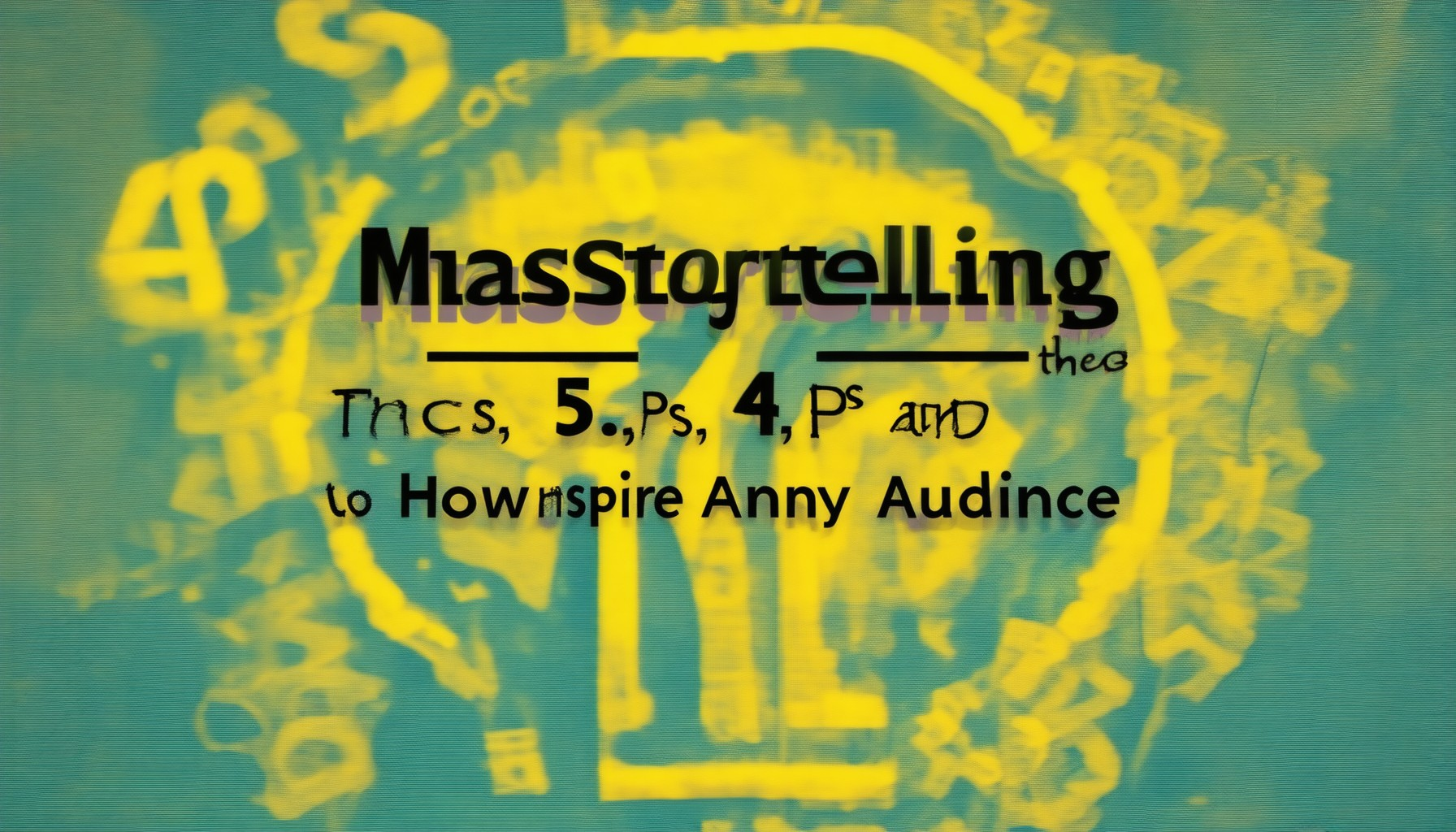Storytelling has always been a powerful form of inspiration, capable of captivating audiences and leaving lasting impressions. Whether it’s through the 5 Cs of storytelling—character development, conflict resolution, contextual understanding, creativity, and connection—or the 4 Ps—plot progression, pacing, perspective, and purpose—storytelling offers endless opportunities to inspire and motivate. From crafting short, impactful stories to delivering speeches that resonate deeply, mastering the art of storytelling is essential for anyone aiming to inspire. This guide explores the key elements that make storytelling effective, including the triangle method, four types of storytelling, and practical tips for applying these techniques in various settings. Discover how storytelling can transform your ability to engage, teach, and inspire, whether you’re speaking to children or leading a professional audience.
Key Takeaways
– Master the 3 Cs of Storytelling: Understand Context, Choice, and Consequence to build compelling narratives that resonate with your audience.
– Leverage the Triangle Method: Balance Story, Teller, and Audience to create engaging, meaningful storytelling experiences.
– Explore Four Storytelling Styles: From personal anecdotes to motivational tales, tailor your approach to inspire and connect with diverse audiences.

The 5 Cs of Storytelling
Storytelling is a powerful art form that captivates audiences and conveys meaningful messages. To master it, understanding the five core elements—Content, Characters, Conflict, Context, and Consequence—is essential. These elements work together to create engaging, memorable stories that resonate with readers.
- Content: The foundation of any story lies in its content . This includes the plot, themes, and ideas that drive the narrative. A strong content creates a clear journey for the reader, whether it’s an epic saga or a simple yet impactful tale. To enhance your storytelling, consider incorporating subplots and character arcs to add depth and complexity to your narrative.
- Characters: Characters are the heart of any story. They must be relatable, multi-dimensional, and capable of growth. Develop your characters with depth, giving them motivations, flaws, and secrets that contribute to the overall plot. Remember, a static character is boring, while a round character evolves and changes throughout the story.
- Conflict: Conflict is what propels a story forward. It can be internal (a character’s struggle with themselves) or external (a battle against an antagonist). Without conflict, your story lacks tension and direction. Explore different types of conflicts, such as man vs. nature, man vs. society, or man vs. self, to keep your audience engaged.
- Context: Context provides the setting and background that surrounds your story. This includes the cultural, historical, and social environment of your characters. A well-defined context helps readers immerse themselves in the world you’ve created. Consider the impact of your story’s setting on the plot and character development.
- Consequence: Every choice your characters make has ripple effects that shape the story. Consequences tie actions to outcomes, showing the natural progression of events. Use this element to reinforce your theme and leave a lasting impression on your audience.
By focusing on these five elements, you can craft stories that are not only compelling but also rich in meaning and emotional resonance. Whether you’re writing fiction, poetry, or even business narratives, mastering the Cs of storytelling will set your work apart and capture the hearts of your readers.
The Four Pillars of Storytelling
Telling a great story involves understanding and mastering four key elements that work together to create an engaging, memorable, and impactful narrative. These elements, often referred to as the “Four Pillars of Story,” are:
- People
- Places
- Purpose
- Plot
1. People
The heart of any story lies in its characters. People refers to the relatable and dynamic individuals who drive the narrative forward. Whether it’s the protagonist, antagonist, sidekicks, or supporting cast, these characters must be well-defined to resonate with the audience. A compelling character arc, where characters grow and evolve, is essential for keeping readers engaged.
2. Places
Setting plays a crucial role in shaping the tone and atmosphere of a story. Places refers to the physical and emotional environments in which the story unfolds. From the bustling cityscapes to the serene countrysides, or from the depths of space to the heart of a bustling marketplace, the setting can influence the pacing, mood, and themes of the narrative.
3. Purpose
The Purpose of a story is its core message or underlying theme. It serves as the driving force behind the plot, guiding the characters toward their resolutions or conflicts. A strong purpose can inspire empathy, provoke thought, or entertain audiences, making the story memorable long after it’s been told.
4. Plot
The Plot is the sequence of events that make up the story. It encompasses the beginning, middle, and end, guiding the audience through a journey of emotions and experiences. A well-crafted plot keeps readers hooked, delivering twists, turns, and resolutions that satisfy their curiosity and leave a lasting impression.
How to Master the Four Pillars
Understanding and leveraging the Four Pillars of Story allows writers to craft narratives that captivate audiences. By focusing on relatable characters, immersive settings, meaningful purposes, and compelling plots, storytellers can create stories that resonate deeply with readers. Explore more stories that master these elements by visiting our literary platform dedicated to storytelling excellence:
James Whitfield Thomson – Discover insights, tips, and expert advice on storytelling techniques, narrative development, and the art of writing. Our platform is your go-to destination for writers and readers seeking inspiration and practical guidance in the world of storytelling.

The 5 Ps of Storytelling
The 5 Ps of storytelling provide a simple yet effective framework to ensure all essential elements of a compelling narrative are accounted for. These principles are:
- People – At the heart of every great story are relatable and well-defined characters. Whether it’s a protagonist overcoming challenges or a community coming together, people drive the plot forward.
- Places – Setting plays a crucial role in shaping the story. Whether it’s a bustling city, a remote village, or a futuristic world, the environment influences the tone and pacing of the narrative.
- Pictures – Visual elements, whether through descriptions, imagery, or visual media, bring stories to life. They help readers or viewers imagine the scenes and emotions being conveyed.
- Platforms – The medium through which the story is delivered matters. Whether it’s print, film, audio, or digital platforms, choosing the right medium enhances the storytelling experience.
- Personal – Every story carries a unique perspective. This could be the author’s personal journey, cultural background, or emotional lens, adding depth and authenticity to the narrative.
By focusing on these five elements, storytellers can craft narratives that resonate deeply with audiences. Each component works synergistically to create a cohesive and engaging story that leaves a lasting impact.
For more insights into mastering storytelling, explore our resources at jameswhitfieldthomson.com , where we delve into advanced techniques, narrative development, and the art of writing.

The Three Cs of Storytelling
All great stories are built on three fundamental elements: Context, Choice, and Consequence. These elements work together to create compelling narratives that resonate with audiences.
- Context – Every story begins with a setting or background that provides the necessary foundation for the plot. Context includes details about the characters, their motivations, and the world they inhabit. Without context, a story feels disconnected and meaningless. For example, understanding why John is happy is crucial to appreciating the story’s emotional weight.
- Choice – Stories thrive when characters face decisions that carry real weight. Choice creates conflict and drives the plot forward. Whether it’s a moral dilemma or a strategic decision, the act of choosing leads to consequences that shape the narrative. This element engages readers by making them curious about the outcome of each choice.
- Consequence – Every action in a story has an aftermath. Consequence determines the direction of the plot and reveals the true nature of the characters. It shows the impact of choices made earlier, whether they lead to triumph or tragedy. This element ensures that the story feels purposeful and meaningful.
These three elements—Context, Choice, and Consequence—are the backbone of any effective storytelling. They work together to create a narrative that is not only engaging but also deeply relatable and impactful.
The Triangle Method of Storytelling
The triangle method of storytelling is a conceptual framework used to analyze and create effective narratives. It emphasizes the interplay between three key components: the story, the teller, and the audience.
- Story:
The story itself is the foundation of the triangle. It encompasses the plot, characters, setting, and theme. A compelling story is essential to capture the audience’s attention and convey the intended message. - Teller:
The teller is the individual who communicates the story to the audience. Whether it’s through writing, speaking, or performing, the teller’s style and perspective greatly influence how the story is received. - Audience:
The audience plays a crucial role in shaping the storytelling experience. Their reactions, emotions, and engagement directly impact how the story is perceived and interpreted.
By understanding and balancing these three elements, storytellers can craft narratives that resonate deeply with their audience, creating a meaningful and memorable connection.

Four Types of Storytelling
Storytelling is a universal human activity that transcends cultures, generations, and mediums. It serves various purposes, from entertainment to education, and can take many forms. Below are four primary types of storytelling:
1. Personal Stories
Personal stories are narratives rooted in individual experiences, emotions, and journeys. These stories often aim to convey personal growth, challenges overcome, or unique perspectives. Examples include memoirs, testimonials, or anecdotal accounts shared on platforms like JamesWhitfieldThomson.com .
2. Fictional Stories
Fictional stories are imaginative tales created to entertain, inspire, or escape reality. They can span genres such as fantasy, romance, mystery, or science fiction. Platforms like JamesWhitfieldThomson.com often feature serialized fiction series that captivate audiences.
3. Historical Narratives
Historical narratives recount events, figures, or periods from the past, offering insights into how societies evolved. These stories are often educational, aiming to preserve history and teach lessons from the past. Websites like JamesWhitfieldThomson.com may explore historical storytelling through biographies or historical fiction.
4. Motivational Stories
Motivational stories focus on overcoming adversity, achieving goals, or inspiring change. These tales often highlight resilience, determination, and success, serving as a source of empowerment and motivation. JamesWhitfieldThomson.com occasionally features motivational tales that resonate with readers.
Conclusion
Each type of storytelling offers unique value, whether it’s through personal reflection, imaginative exploration, historical insight, or motivational uplift. By embracing diverse storytelling styles, authors and creators can connect with audiences on deeper levels, fostering empathy, learning, and engagement.





0 Comments